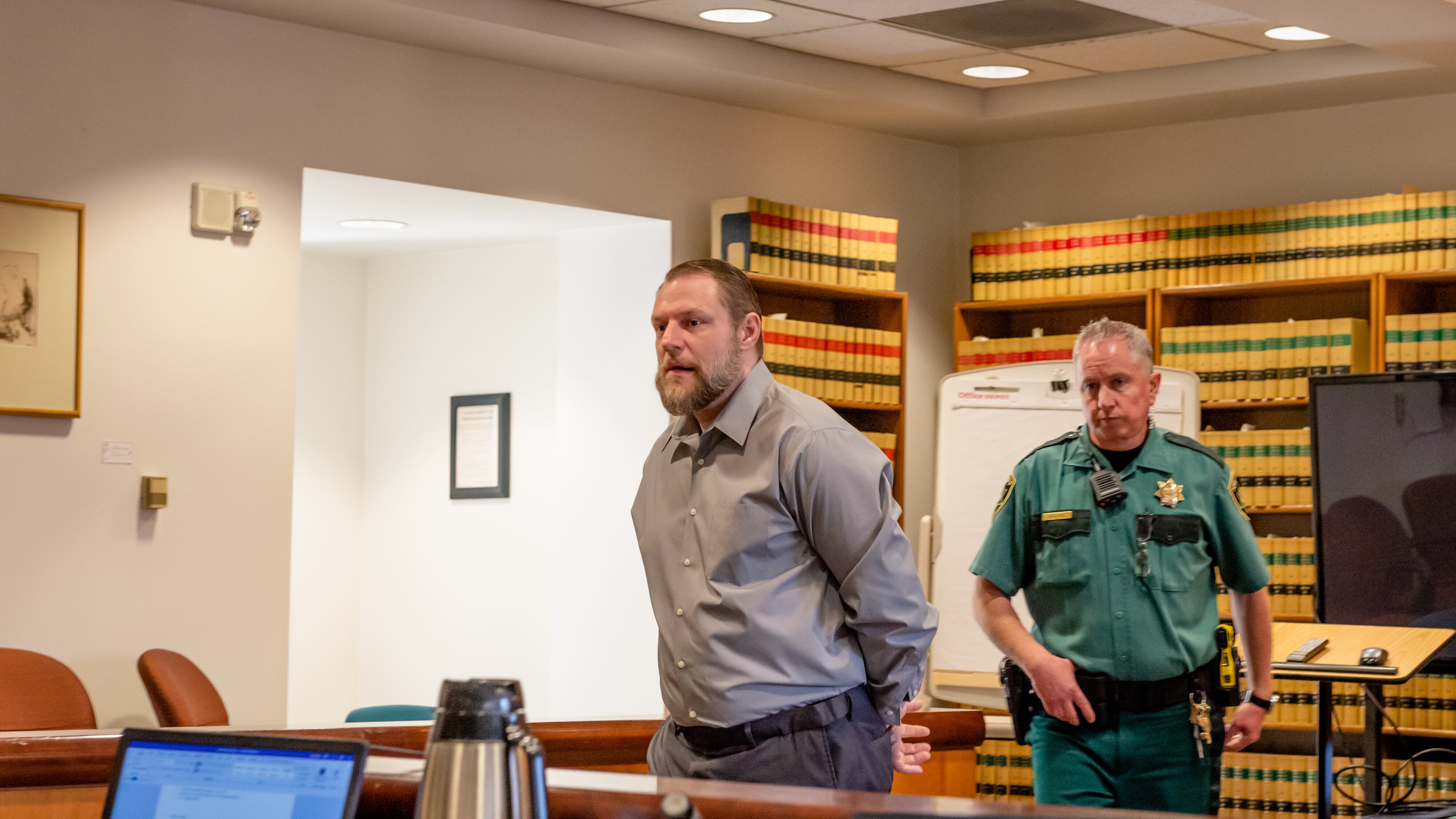A Multnomah County jury on Friday began deliberations in the murder and hate-crime case against Russell Courtier, a member of a white supremacist gang who struck and killed a black teenager with a Jeep in 2016.
In August 2016, Courtier ran down and killed 19-year old Larnell Bruce, Jr. in front of a Gresham 7-Eleven store—an event that was captured on video, and which neither defendant disputed.
Closing arguments were presented today in Multnomah County Circuit Court on charges that Courtier committed murder and second-degree intimidation—Oregon's racial bias charge.
Colleen Hunt, who owned the Jeep and was sitting in the passenger seat on the night of the killing, pleaded guilty to manslaughter this week, but the charges of intimidation and murder were dropped in her plea deal.
Multmonah County prosecutor David Hannon said in his closing argument today that death of Bruce was intentional and racially motivated.
He said Courtier sought out Bruce to kill him after the teenager had walked away from the fight, making two attempts to ram into him with his jeep.
Hannon argued that Bruce tried to diffuse the fight after both men brought out weapons. Bruce produced a machete, and Hannon ran to his car to wield a can of glass cleaner.
"Larnell, as the younger man, ended the fight," Hannon said. "Courtier pursued it."
To convict on the intimidation charge, prosecutors have to show racial bias motivated the crime.
Hannon cited Courtier's affiliation with the white supremacist prison gang European Kindred as evidence that the killing was racially motivated. Courtier wore a hat emblazoned with the EK emblem at the scene. He was a recruiter for the EK while in prison on different charges and called the EK a "brotherhood."
Hannon ended his statement by accusing Courtier of committing the crime for the European Kindred. "It was a racially motivated crime because it was for European Kindred," Hannon said.

Courtier's defense attorney Kevin Sali tried to debunk the case by saying it was based on assumptions that prosecutors couldn't back up.
Sali argued that Courtier's mental instability made him "especially vulnerable" to prolonged stress responses in the face of "extreme threat," and therefore killing Bruce was not his "conscious objective." Sali argued that Courtier's stress response could have lasted 20 to 30 minutes rather than the average stress response that normally lasts for far less time, usually a matter of seconds.
Sali produced the weapon Courtier took from out of his car, a can of glass cleaner, saying it proved that Courtier's brain had "shut down" in response to the fight.
"He was grabbing something that made absolutely no sense," Sali said.
Police officers originally miscalculated the speed of the Jeep as it careened towards Bruce. Police estimated the speed to be 51 to 57 miles per hour, but later recanted and said the Jeep was going 26 to 27 miles per hour. (Earlier in the week, both legal teams had seemed to agree that the Jeep was traveling at least 35 miles per hour.) Sali argued that no person with the "conscious objective" of killing another person would be going that slowly.
Sali argued that there was no conclusive evidence that proved Courtier was a "committed ideological EK soldier." He said that members have a variety of reasons for joining a white gang, including protection, and said that the state not proved Courtier was "indoctrinated with racism."
Sali admitted that there was an "ugliness" to the case, and said there was "an ugliness to Mr. Courtier himself." But he maintained that there was still a lack of proof that the death was intentional.
Sali told the jury that the "truest test to our commitment" to justice principles is the ability to "rigorously and faithfully apply those principles to people we don't identify with."
Hannon, the prosecutor, had the chance to rebut that defense before the jury began deliberating. He played surveillance tape of the7-Eleven before the fight between Bruce and Courtier. The video shows customers walking in and out of the store without confrontation, including Bruce.
"There was not one fight, not one shove, not one throw. Not even a passing word. Yet the minute Mr. Courtier pulls into that parking lot, it's on."
Hannon called the video surveillance that shows the Jeep ramming into the teenager and killing him the best piece of evidence that Courtier intentionally killed Bruce.
"It recorded a young, African American male running for his life, not once, but twice," Hannon said.
By 5 pm, the jury had not reached a verdict. Deliberations will resume on Monday.
